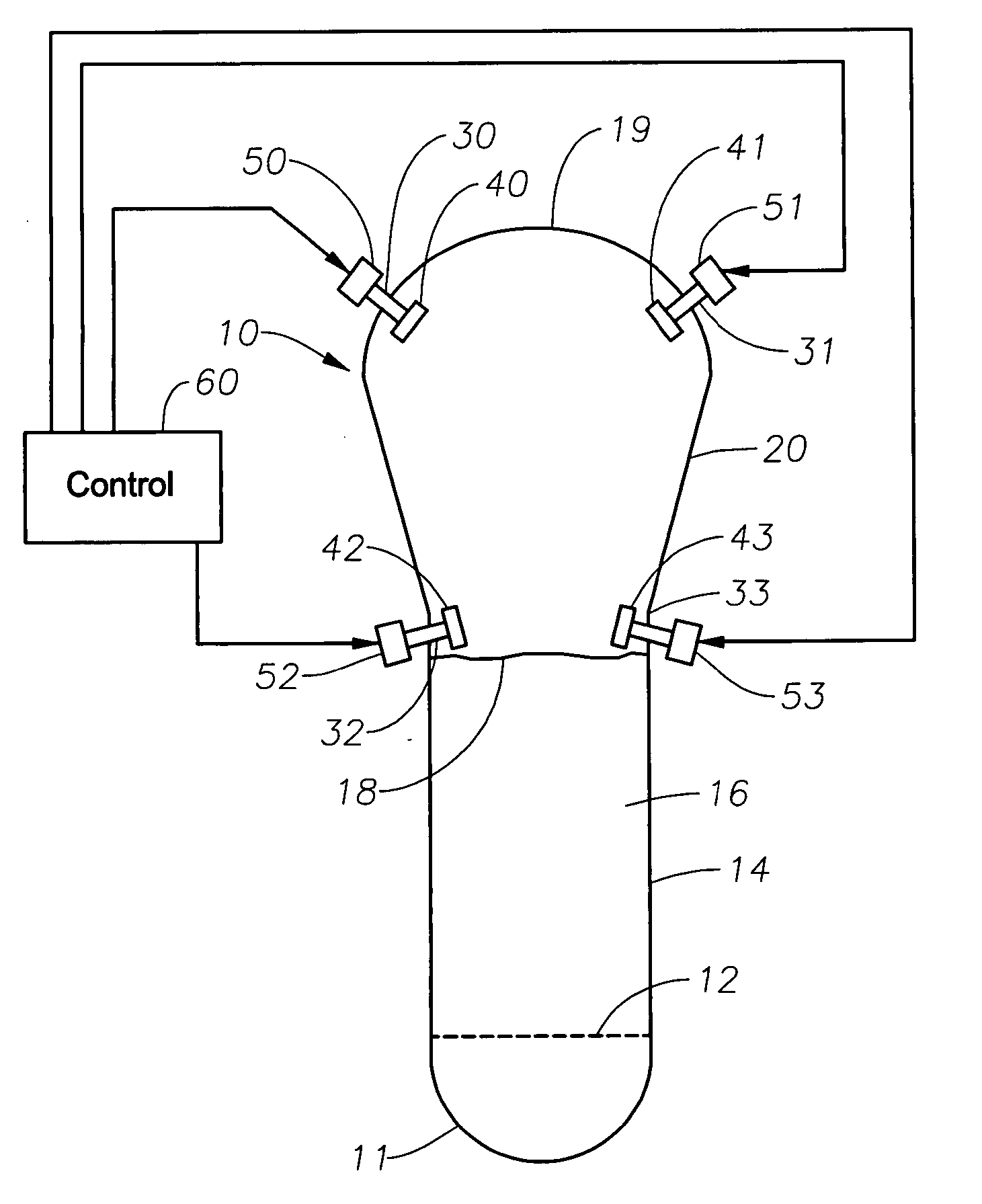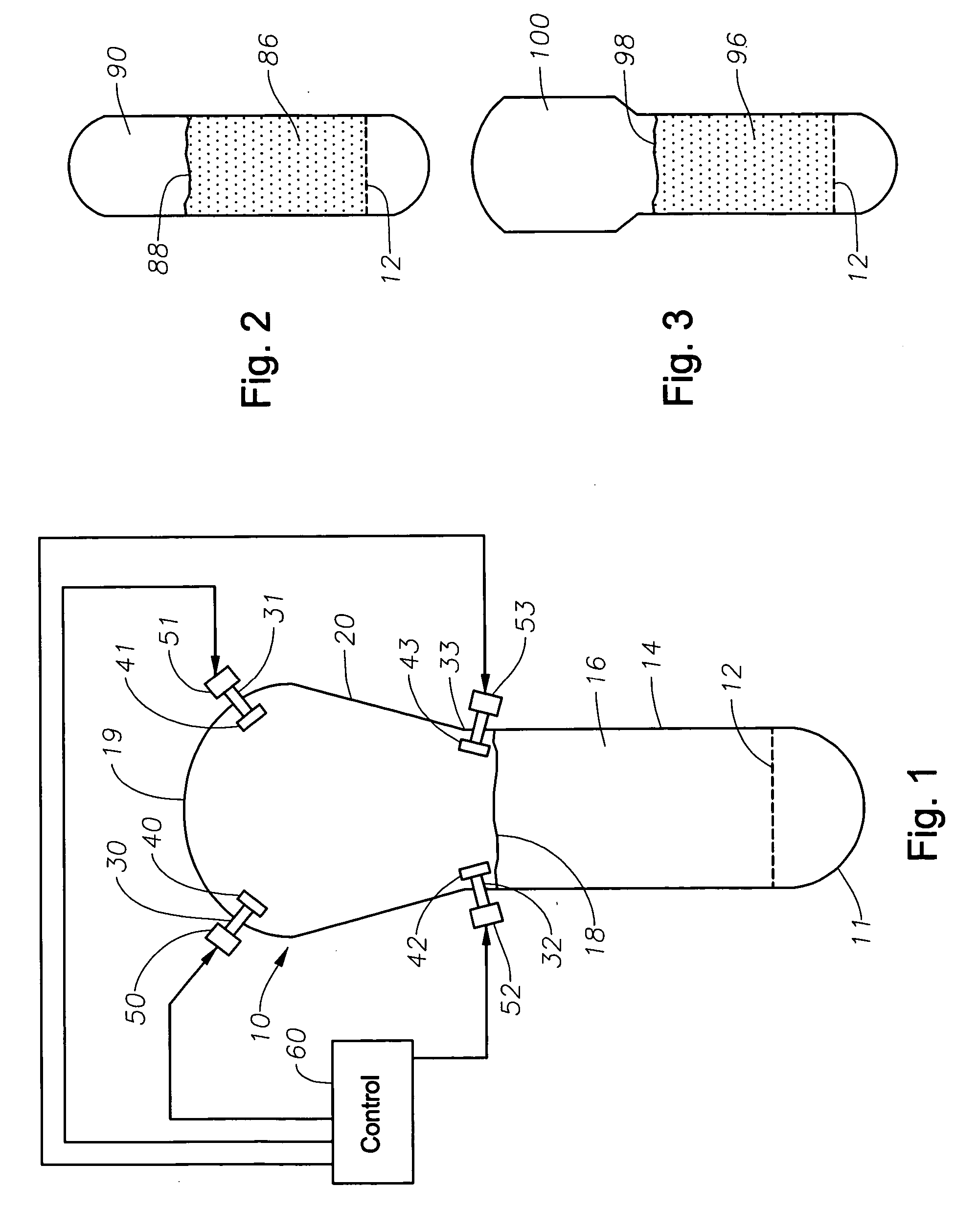Method for sonic cleaning of reactor with reduced acoustic wave cancellation
a reactor and acoustic wave cancellation technology, applied in the direction of cleaning hollow objects, liquid cleaning, chemistry apparatus and processes, etc., can solve the problems of weak spots at the area, adversely affecting the properties of polymer products, falling off the reactor wall, clogging the distributor plate, etc., to reduce the time-average effect of weak spots and reduce or eliminate the time-average
- Summary
- Abstract
- Description
- Claims
- Application Information
AI Technical Summary
Benefits of technology
Problems solved by technology
Method used
Image
Examples
Embodiment Construction
[0035] An embodiment of the inventive reactor system will be described with reference to FIG. 1. The FIG. 1 system includes fluidized bed reactor 10. Reactor 10 has a bottom end 11, a top section 19, a cylindrical (straight) section 14 between bottom end 11 and top section 19, and a distributor plate 12 within section 14. The diameter of each horizontal cross-section of section 19 is greater than the diameter of straight section 14. In operation, dense-phase surface 18 is the boundary between lean phase portion present within reactor 10 (above dense-phase surface 18) and dense-phase portion 16 within reactor 10 (in the volume bounded by section 14, plate 12, and surface 18). In operation, freeboard surface 20 of reactor 10 includes the inner surface of top section 19 and the portion of the inner surface of section 14 above surface 18.
[0036] The FIG. 1 system also includes four sonic sources mounted in positions for cleaning reactor 10's freeboard surface 20. One sonic source includ...
PUM
| Property | Measurement | Unit |
|---|---|---|
| conical angle | aaaaa | aaaaa |
| conical angle | aaaaa | aaaaa |
| angle | aaaaa | aaaaa |
Abstract
Description
Claims
Application Information
 Login to View More
Login to View More - R&D
- Intellectual Property
- Life Sciences
- Materials
- Tech Scout
- Unparalleled Data Quality
- Higher Quality Content
- 60% Fewer Hallucinations
Browse by: Latest US Patents, China's latest patents, Technical Efficacy Thesaurus, Application Domain, Technology Topic, Popular Technical Reports.
© 2025 PatSnap. All rights reserved.Legal|Privacy policy|Modern Slavery Act Transparency Statement|Sitemap|About US| Contact US: help@patsnap.com



